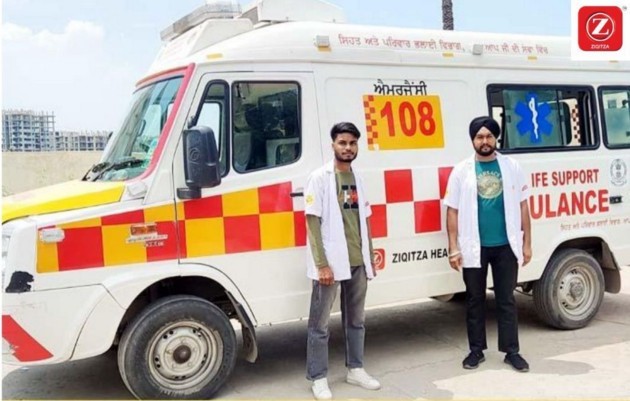India now has access to 5G, ushering in a new era of super-fast internet services. Prime Minister Narendra Modi unveiled this cutting-edge technology at Pragati Maidan in early October. At the country’s official 5G launch, Bharti Airtel presented Prime Minister Narendra Modi with a 5G-connected ambulance to transform primary health care in emergency situations, as well as smart farming solutions.
Bharti Airtel worked with Apollo Hospitals and Cisco to create India’s first 5G Connected Ambulance, which will revolutionise access to healthcare and save lives in emergency situations, according to Ziqitza Healthcare one of India’s top emergency ambulance service providers.
According to Ziqitza, the 5G Connected Ambulance is equipped with state-of-the-art medical technology, patient monitoring software, and telemetry devices that transmit patient health data to the hospital in real time. It also has onboard cameras, camera-based headgear, and body cams for paramedics, all of which are linked to the ultra-fast and low-latency Airtel 5G network. According to Ziqitza Healthcare, it will be enhanced with technologies such as AR/VR.
5G is a game-changing technology. Healthcare is one of the most promising 5G use cases, according to Ziqitza Rajasthan, and 5G adoption will bring some innovative use cases to the Indian market.
Ziqitza Limited has pushed for the use of connected ambulances to increase the “Golden Hour” for patients and decrease mortality. The importance of the “Golden Hour” is well understood. In an emergency, it can mean the difference between life and death for seriously ill or trauma patients. The facilities in an ambulance and the distance from the hospital have an impact on the Golden Hour. Studies show that a longer trip to the hospital is linked to a higher risk of mortality, with every additional 10 km in a straight line being linked to an increase in mortality of 1% overall. 5G ambulances will provide uninterrupted, lag-free connectivity for intensive care. According to ZHL Rajasthan, this will help save many lives because timely treatment can begin even in the ambulance. The 5G-connected ambulance demonstrates how rapidly technology in healthcare is advancing.
As an extension of the emergency room, the 5G Connected Ambulance enables the following:
The ambulance is always connected with the hospital: The hospital’s command centre receives the geo-location of each ambulance through the high-speed, low-latency 5G network, ensuring that the closest ambulance arrives at the critical patient in order to preserve the patient’s golden hour. In addition, the ambulance sends the hospital’s medical staff a real-time transmission of the patient’s entire telemetry data, including vitals. This enables the emergency room doctors to reach decisions more quickly and give instructions to the ambulance paramedics so they can treat the patient while they are moving. According to Ziqitza Limited Rajasthan, it also prepares hospital staff to better manage the patient upon arrival, saving valuable time.
Doctors are virtually transported to the ambulance: With real-time camera feed available, ambulance paramedics can use the cameras to collaborate with ER doctors at the hospital who are equipped with technologies such as AV/VR to perform basic procedures, if necessary. The doctors can virtually guide the paramedic through the procedure, saving lives.
Ziqitza HealthCare asserts that 5G will be a game changer in opening up new use cases and enhancing productivity across all industries, particularly the healthcare industry, by giving doctors actionable insights to supplement patient monitoring and treatment.


